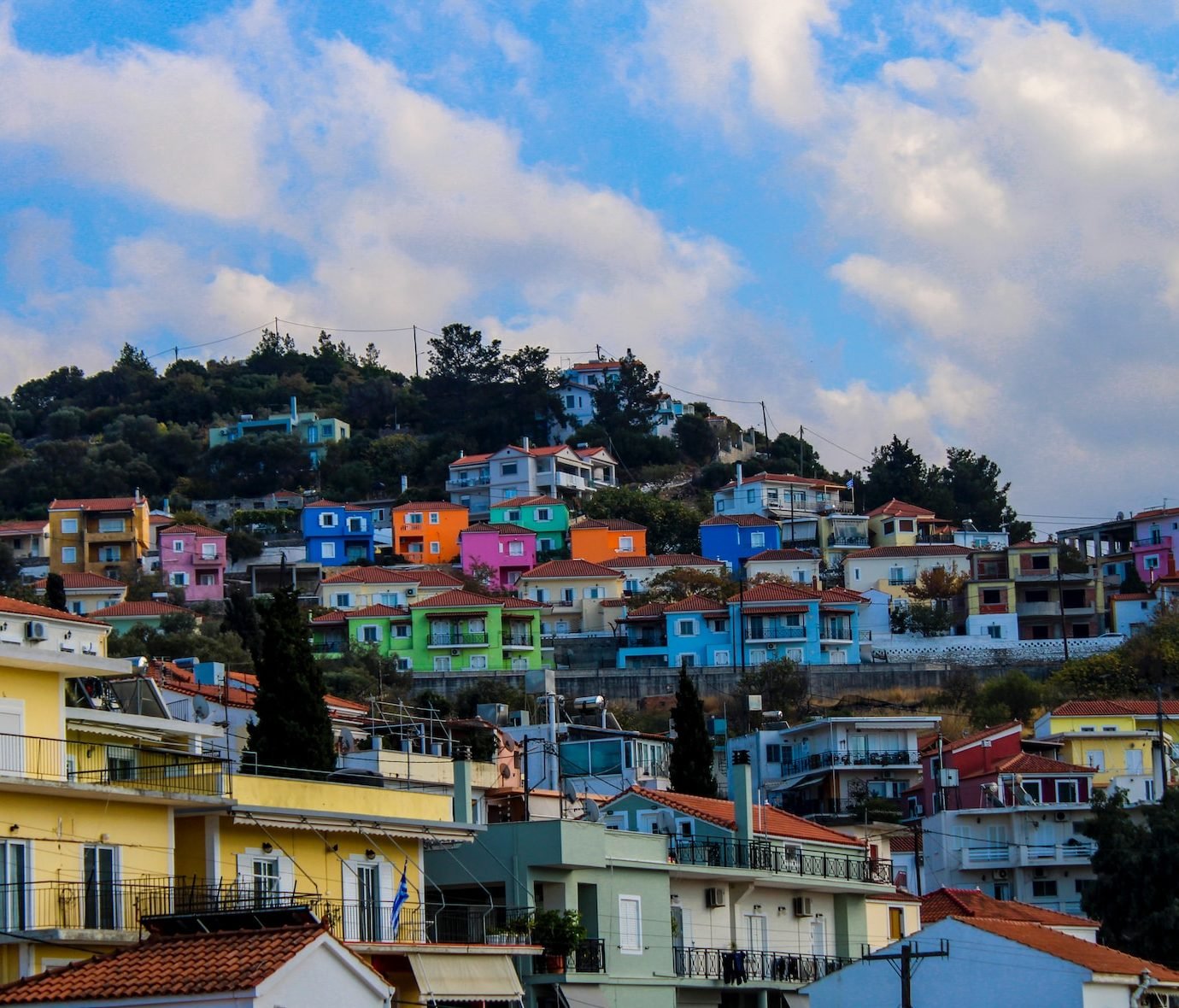Karlovasi Samos is the second-largest town of the island. It lies on the northwestern coast, about 32 kilometers from Vathi. The town includes five distinct districts: Paleo, Neo, Mesaio, Ormos, and Limani. These areas merged in the mid-20th century to form modern Karlovasi.
The town has a long and colorful history. In the 17th century, Karlovasi became known for wine and onion trade. Later, during the late 1800s and early 1900s, it grew into a major tanning and cigarette production center.
Visitors can explore this history at the Tannery Museum. It displays tools and materials once used in leather processing. Another museum, the Historic and Folklore Museum, shows furniture, clothing, and tools from rural Samos life between 1870 and 1955.
Karlovasi also serves as an educational center. The University of the Aegean houses several departments here. These include Mathematics, Statistics, and Information and Communication Systems. As a result, many students live in town, bringing energy and youth to the area.
Nature surrounds Karlovasi and offers many outdoor activities. Potami Beach, just a few kilometers away, features clear water and peaceful scenery. From there, a short path leads to the Potami Waterfalls. Ferns and trees shade the trail, creating a cool and scenic route.
Architecture in Karlovasi reflects its wealthy past. Neoclassical homes line the streets of the older districts. Moreover, the Church of Agia Triada, perched on a hill, offers wide views of the town and sea. It is a popular spot for photos and quiet reflection.
Several hotels, cafes, and tavernas serve both locals and tourists. Shops sell local wine, honey, and handmade products. Also, parking is easy in most areas, and roads connect Karlovasi well with other parts of the island.
In short, Karlovasi Samos blends history, culture, and nature in one vibrant town. Its mix of heritage, education, and scenic beauty makes it a great place to visit while exploring Samos.



Comment (0)